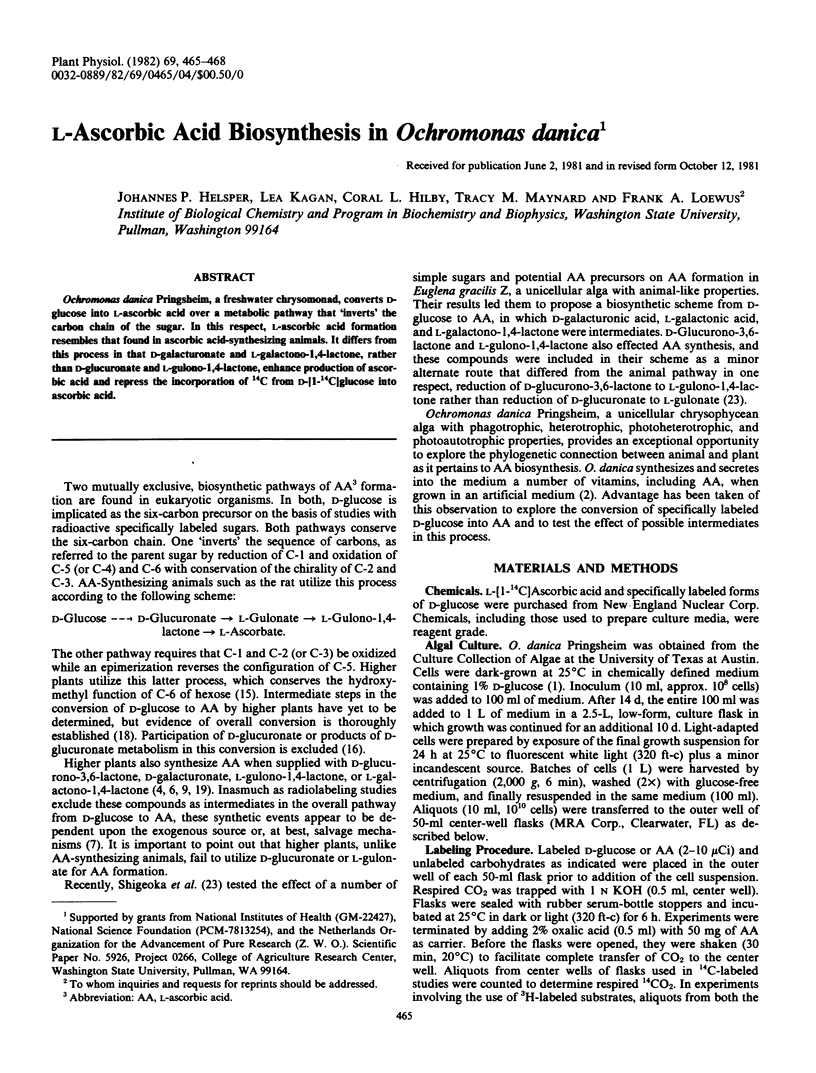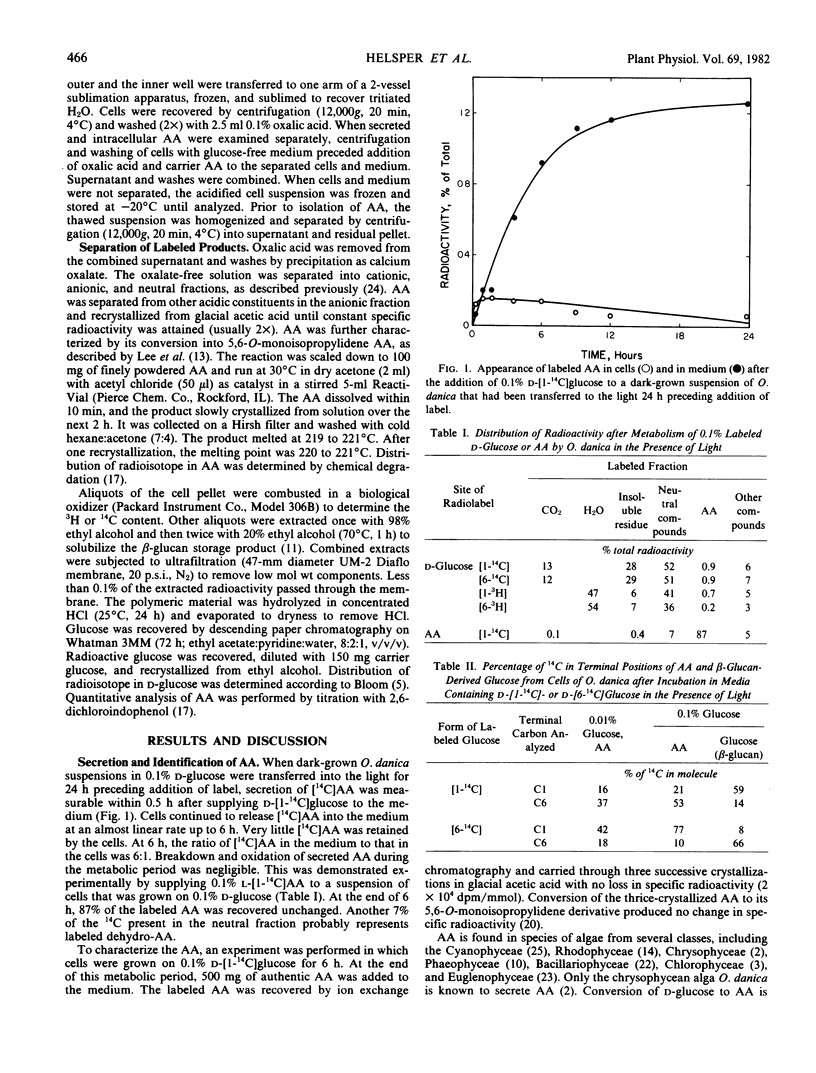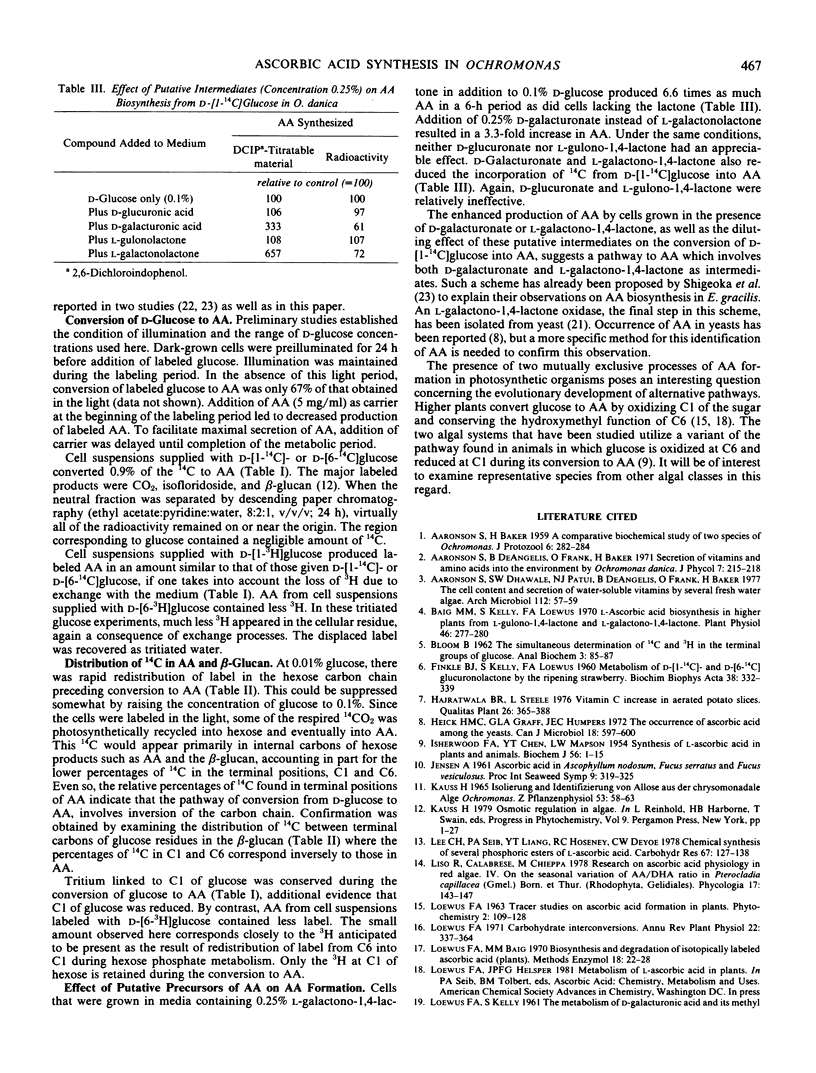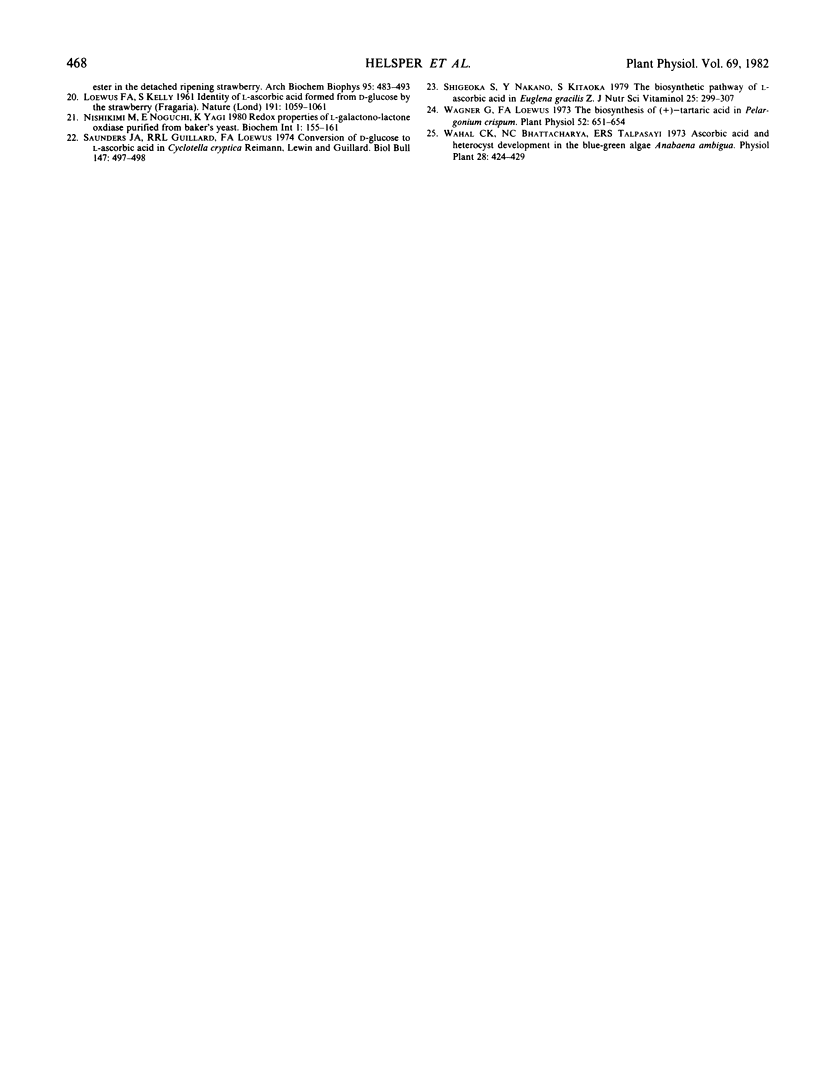Abstract
Ochromonas danica Pringsheim, a freshwater chrysomonad, converts d-glucose into l-ascorbic acid over a metabolic pathway that `inverts' the carbon chain of the sugar. In this respect, l-ascorbic acid formation resembles that found in ascorbic acid-synthesizing animals. It differs from this process in that d-galacturonate and l-galactono-1,4-lactone, rather than d-glucuronate and l-gulono-1,4-lactone, enhance production of ascorbic acid and repress the incorporation of 14C from d-[1-14C]glucose into ascorbic acid.
Full text
PDF



Selected References
These references are in PubMed. This may not be the complete list of references from this article.
- Aaronson S., Dhawale S. W., Patni N. J., DeAngelis B., Frank O., Baker H. The cell content and secretion of water-soluble vitamins by several freshwater algae. Arch Microbiol. 1977 Feb 4;112(1):57–59. doi: 10.1007/BF00446654. [DOI] [PubMed] [Google Scholar]
- BLOOM B. The simultaneous determination of C14 and H3 in the terminal groups of glucose. Anal Biochem. 1962 Jan;3:85–87. doi: 10.1016/0003-2697(62)90048-9. [DOI] [PubMed] [Google Scholar]
- Baig M. M., Kelly S., Loewus F. L-ascorbic acid biosynthesis in higher plants from L-gulono-1, 4-lactone and L-galactono-1, 4-lactone. Plant Physiol. 1970 Aug;46(2):277–280. doi: 10.1104/pp.46.2.277. [DOI] [PMC free article] [PubMed] [Google Scholar]
- FINKLE B. J., KELLY S., LOEWUS F. A. Metabolism of d-[I-14C]- and d-[6-14C] glucuronolactone by the ripening strawberry. Biochim Biophys Acta. 1960 Feb 26;38:332–339. doi: 10.1016/0006-3002(60)91249-x. [DOI] [PubMed] [Google Scholar]
- Heick H. M., Graff G. L., Humpers J. E. The occurrence of ascorbic acid among the yeasts. Can J Microbiol. 1972 May;18(5):597–600. doi: 10.1139/m72-094. [DOI] [PubMed] [Google Scholar]
- ISHERWOOD F. A., CHEN Y. T., MAPSON L. W. Synthesis of L-ascorbic acid in plants and animals. Biochem J. 1954 Jan;56(1):1–15. doi: 10.1042/bj0560001. [DOI] [PMC free article] [PubMed] [Google Scholar]
- LOEWUS F. A., KELLY S. Identity of L-ascorbic acid formed from D-glucose by the strawberry (Fragaria). Nature. 1961 Sep 9;191:1059–1061. doi: 10.1038/1911059a0. [DOI] [PubMed] [Google Scholar]
- LOEWUS F. A., KELLY S. The metabolism of p-galacturonic acid and its methyl ester in the detached ripening strawberry. Arch Biochem Biophys. 1961 Dec;95:483–493. doi: 10.1016/0003-9861(61)90180-1. [DOI] [PubMed] [Google Scholar]
- Shigeoka S., Nakano Y., Kitaoka S. The biosynthetic pathway of L-ascorbic acid in Euglena gracilis Z. J Nutr Sci Vitaminol (Tokyo) 1979;25(4):299–307. doi: 10.3177/jnsv.25.299. [DOI] [PubMed] [Google Scholar]
- Wagner G., Loewus F. The Biosynthesis of (+)-Tartaric Acid in Pelargonium crispum. Plant Physiol. 1973 Dec;52(6):651–654. doi: 10.1104/pp.52.6.651. [DOI] [PMC free article] [PubMed] [Google Scholar]


